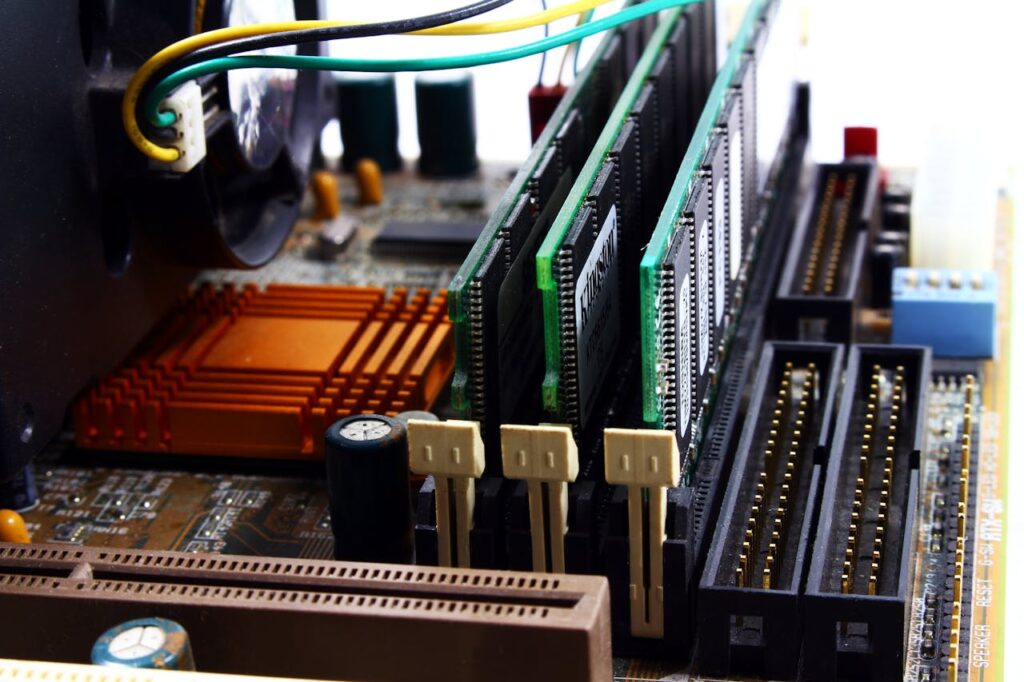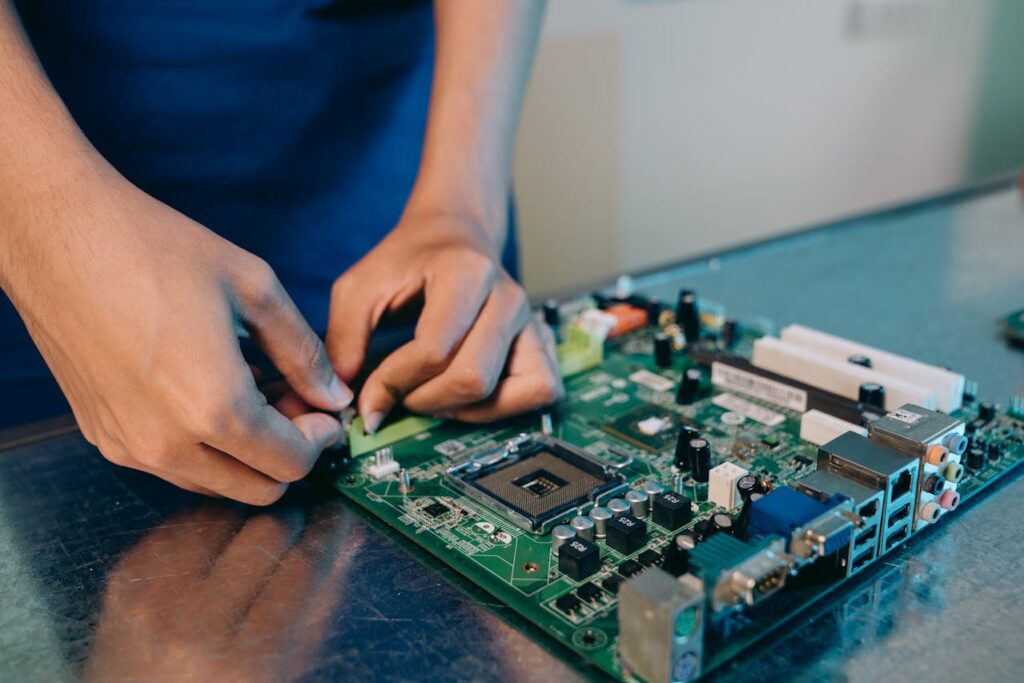CPU Shortage Update: Delays Likely Until Late

CPU Shortage Update: Delays Likely Until Late
What do the ongoing CPU shortages mean for the tech industry, and when can consumers expect delays to subside? The semiconductor supply chain has been under strain, leading to a computer processor shortage that affects both businesses and individuals. As the situation continues, one thing is clear: the CPU shortages will have a lasting impact on the industry.

The current state of the semiconductor supply chain is complex. Multiple factors contribute to CPU shortages. As a result, tech industry delays are expected to continue until late 2025, causing significant disruptions to the market. With expected delays becoming the new norm, it’s essential to understand the root causes of the issue and what’s being done to address it.
Key Takeaways
- The CPU shortages are expected to continue until late 2025, causing significant delays in the tech industry.
- The semiconductor supply chain is under strain, leading to a computer processor shortage.
- Expect delays to affect both businesses and individual consumers.
- The tech industry delays will have a lasting impact on the market.
- The CPU shortages are caused by a combination of factors, including increased demand and supply chain disruptions.
Current State of the Global CPU Shortage
The global CPU shortage has hit many markets hard. It has caused delays in shipping and a lack of electronic parts. This shortage has slowed down production, affecting products that need these parts.
Chip-making problems have played a big role in this shortage. The AMD CPU shortage is a clear example.
The shortage’s effects are wide-reaching, hitting consumers hard. Some main issues include:
- Prices going up because of high demand and low supply
- Fewer products are available, leading to delayed shipping and unhappy customers
- Businesses facing delays and disruptions in their supply chains
Supply issues vary by region, with some areas hit harder than others. The shortage shows the need for better supply chain management and highlights the importance of solving chip-making problems to lessen the impact of the AMD CPU shortage.
As things change, it’s key to monitor updates. Understanding the current CPU shortage situation helps us deal with its challenges and opportunities.
![]()
Root Causes Behind the Semiconductor Crisis
The current CPU shortage is due to many factors. These include increased demand for CPUs and problems in the supply chain. The Intel CPU shortage has been hit hard by the COVID-19 pandemic, which has greatly reduced manufacturing capacity.
Because of this, the chip shortage in 2025 is expected to last, and the CPU shortage in 2025 worries the tech industry a lot.
Some main reasons for the semiconductor crisis are:
- More demand for CPUs from gaming and cloud computing
- Supply chain problems because of COVID-19
- There is not enough manufacturing capacity because of how complex semiconductors are
To fix the CPU shortage, makers need to make more and improve their processes. They might need to spend on new tech and ways to make things. They also need to spread out where they get parts so they do not rely on just one place.
By understanding why the semiconductor crisis happened, the tech world can find ways to solve the chip shortage in 2025. This will help ensure there are enough CPUs in the future.
Manufacturing Bottlenecks and Production Challenges
Intel’s supply chain issues have caused major problems in making CPUs. There is a shortage of processors, leading to a lack of computer parts. This issue affects not just tech but the whole economy.

The shortage of CPU chips is made worse by a lack of raw materials, insufficient factory space, and quality issues. Let’s look at these problems:
Raw Material Scarcity
There is not enough silicon and rare earth metals to make CPUs. This makes it hard for makers to keep up with demand and raises production costs.
Factory Capacity Issues
Factories can’t make enough CPUs because they’re too full. Even though they’re working hard, they can’t meet demand. This causes a big delay in getting orders, making customers unhappy.
Quality Control Concerns
Quality issues are also a big problem. Makers are finding it hard to keep up with quality standards. This means more CPUs don’t work right, worsening the shortage.
In short, the problems in making CPUs are complex. Fixing these issues will require work from everyone involved. We need a team effort to ensure that CPUs are made reliably and in sufficient numbers.

Intel’s Response to Supply Chain Disruptions
Intel is tackling the IT hardware shortages head-on. They are working hard to fix the supply chain problems. CPU News 2025 shows that they are making moves to solve the chip shortage.
Everyone wants to know: Is the chip shortage over? Intel is boosting production and improving the supply chain, which is a good start.
Intel has started several projects to help. They include:
- Investing in new manufacturing technologies to increase production capacity
- Improving supply chain visibility to reduce delays and disruptions
- Collaborating with partners to develop new products and solutions
These actions will help the tech world, which has been hit hard by the chip shortage. Keeping up with CPU news 2025 and industry updates is key.
AMD’s Strategy and Market Position During the Shortage
AMD is dealing with the CPU production challenges in many ways. The computer shortage has made its products more sought after. Despite the Intel shortage, AMD has kept its strong market position through smart planning and flexibility.

Many wonder if there is still a chip shortage. Yes, it’s hitting the whole tech world. However, AMD is trying to lessen the impact of shortages on its products. It’s started new partnerships and improved how it gets its products to customers.
Product Line Impacts
The CPU shortage has hit AMD’s products hard. Some products are delayed or hard to find. However, AMD is focusing on making the most needed products first. This way, customers can get what they need.
Distribution Changes
AMD has changed how they get their products to customers. They’ve teamed up with new distributors and improved their logistics. This has helped get products to customers faster and kept AMD’s market position strong.
Manufacturing Partnerships
AMD has teamed up with other manufacturing companies. This move has helped them make more products and not rely on just one supplier. By working with partners, AMD has kept its edge and kept innovating.
Also Read,
What is Cloud Computing?
Types of Cloud Computing
What is the Average Cost of Cloud Service?
Which Cloud Services Is Cheapest?
Is AWS or Google Cloud More Popular?
Economic Implications for the Tech Industry
The global chip shortage has big economic effects on the tech world. It hurts companies’ profits and could harm them for a long time. Companies like Intel are dealing with Intel processor issues in 2025, affecting their production and money.
Everyone wonders if the chip shortage will end or continue. The chip supply shortage is a big problem with no simple fix. It’s caused by many things, like manufacturing problems and production issues.
As tech grows, chip demand will increase, making the shortage worse. Companies need to find ways to stay ahead in the market.
- Reduced production due to manufacturing bottlenecks
- Increased costs resulting from the chip supply shortage
- Potential long-term damage to the industry’s reputation and customer trust
Companies must understand the chip shortage’s economic impact and find ways to lessen its effects. Fixing the shortage’s causes and investing in new tech can give the industry a better future.
Consumer Impact and Buying Recommendations
The ongoing semiconductor crisis, including the land shortage, has hit consumers hard. Prices have gone up, and products are harder to find. As we near 2025, many wonder if there will be a chip shortage. There is, and knowing the market is key to smart buying.
When looking to buy, consider these tips:
- Price changes: Expect prices to go up because of the shortage in 2025.
- Other choices: Look for products or brands that are not as hit by the shortage.
- Buy at the right time: Watch market trends and buy when prices are steady.
Staying current with market news is vital for those buying products hit by the AMD shortage. Being informed and flexible helps you deal with the crisis.
Consumers need to be patient and flexible with the IT shortage in 2025. Knowing the market and making smart choices can lessen the crisis’s impact on shopping.
Government Interventions and Policy Changes
Governments are taking action to tackle the silicon shortage in 2025. They aim to ease the PC shortage, which includes efforts to deal with the CPU availability crisis and Intel chip shortage.
Some key initiatives include:
- Investing in domestic semiconductor manufacturing to reduce reliance on international suppliers
- Providing incentives for companies to develop and produce chips locally
- Implementing policies to promote fair competition and prevent price gouging
These steps can help stabilize the market and improve CPU availability. Governments support local manufacturing and fair competition, which helps reduce the impact of the Intel chip shortage on consumers.
As the silicon shortage in 2025 continues, governments must work together. Sharing knowledge and resources is key. This ensures a stable and secure supply chain for the future.

Supply Chain Innovations and Adaptations
The global chip shortage is affecting the tech world. Companies are finding new ways to deal with it. They are working hard to fix the shortage by starting new projects.
One big problem is that there are not enough places to make processors. This has led to the creation of new factories. These new places will help make more chips.
Companies are using new materials and tech to improve chips. Intel and AMD are spending a lot on research and want to make their factories more efficient.
The shortage has inspired companies to come up with new ideas. They are using artificial intelligence and machine learning, which help make chips faster and better.
New Manufacturing Locations
New places to make chips are being built. This will help solve the shortage. Countries like the United States, China, and Taiwan are getting new factories.
This will strengthen the supply chain and ensure that we have enough chips in the future.
Technology Improvements
New tech is helping to solve the chip shortage. Companies are using 3D printing and nanotechnology, which help make chips faster and use less waste.
These changes will produce more chips, help the planet, and stabilize the supply chain.
In short, the chip shortage has made companies very creative. We will see new places to make chips and better tech. This will help solve the shortage and strengthen the future supply chain.
Conclusion: Looking Ahead to Resolution
The computer chip shortage has messed up the tech world. But there’s a light at the end of the tunnel. Companies like Intel are working hard to make more chips and build new places to make them.
New ways to get chips and better tech are helping fix the problem. This means we might see more Ryzen 7 7800x3d chips soon.
As the tech world improves and governments help, things look up. It might take some time, but we’re getting closer to solving the global chip shortage. Everyone is working together to make sure we have the chips we need.
We can get past this tough time with a little patience and a lot of creativity. Then, the tech world can start moving fast again, and we’ll be able to get the cool tech we love and need.
FAQ
How long will the CPU shortage last?
The CPU shortage is expected to last until late 2025. It is caused by high demand, supply chain problems, and manufacturing issues.
How has the CPU shortage impacted consumer markets?
The shortage has caused delays and made products hard to find. Many items are delayed because of the lack of computer processors.
What are the root causes behind the semiconductor crisis?
The crisis is due to many factors. High demand, supply chain problems, and manufacturing issues are key. The COVID-19 pandemic has made things worse.
What manufacturing challenges are CPU makers facing?
CPU makers face many challenges. These include a lack of raw materials, factory capacity issues, and quality problems, which make it hard to meet demand.
How has Intel responded to the supply chain disruptions?
Intel is working hard to solve the problems. The company has devised strategies to continue making processors despite the shortage.
What is AMD’s strategy during the CPU shortage?
AMD is also dealing with the shortage. The company has changed its product lines and partnerships to cope with this difficult time.
What are the economic implications of the CPU shortage for the tech industry?
The shortage could hurt the tech industry’s finances. It might also cause long-term damage to the industry.
How can consumers navigate the CPU shortage?
Consumers should watch prices and availability. They can look for other options and plan their purchases. Staying updated on market news is also helpful.
What government interventions and policy changes are being explored to address the CPU shortage?
Governments are trying to help. They’re looking at ways to boost domestic manufacturing and fix supply chain problems.
What innovations and adaptations are being developed in the supply chain to address the CPU shortage?
The shortage has led to new ideas in the supply chain. To tackle the shortage, new manufacturing sites, technology, and logistics solutions are being developed.


